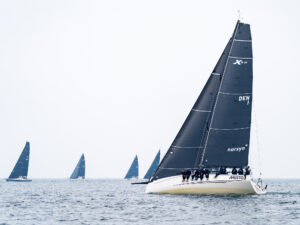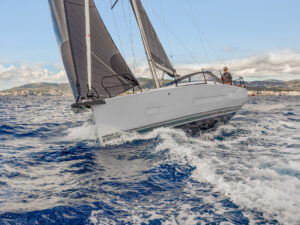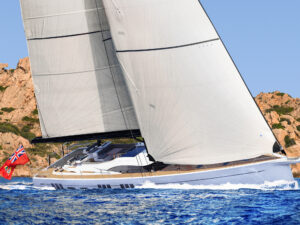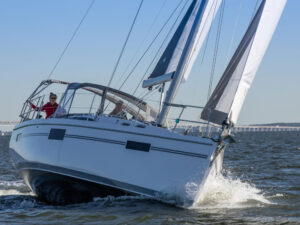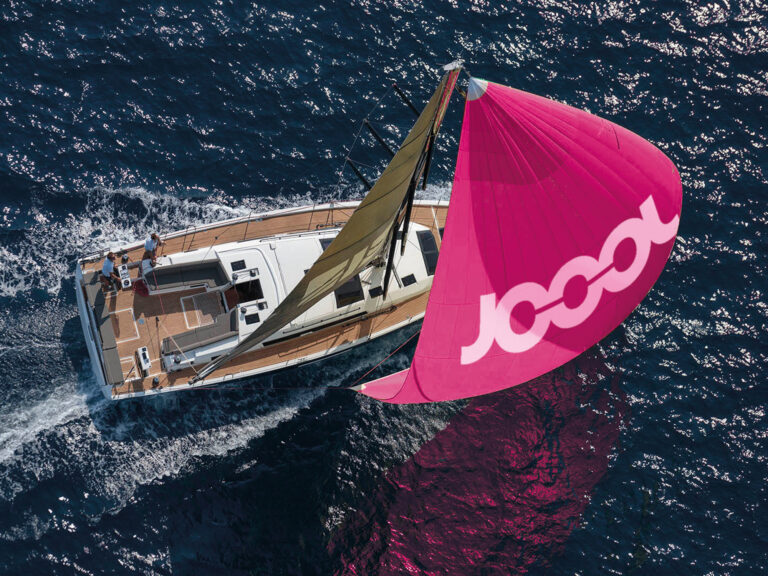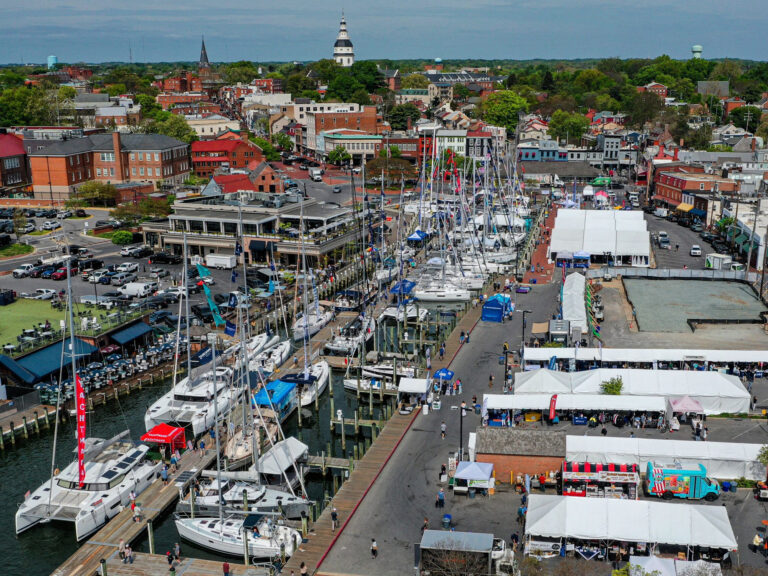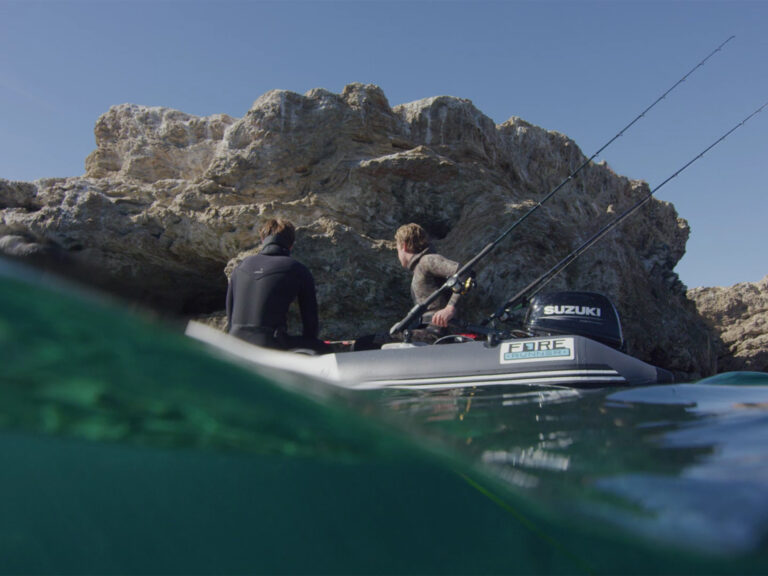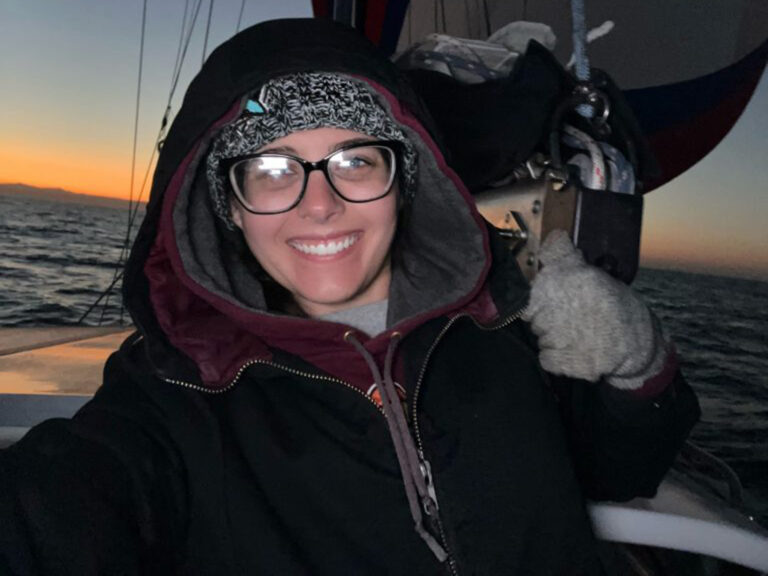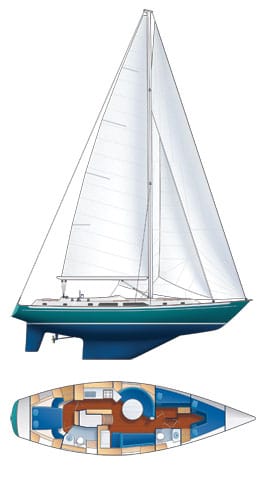
Nicholson 476 drawings
C&N offered the boat in several configurations: aft cockpit, center cockpit, sloop, ketch, and three choices of keel. We only built a few of the possible permutations, but accommodating them all in the design was quite an exercise. The deck mold had three parts. The forward part served both models and included the forward couple of feet of the center cockpit. To that would be attached the mold for either the center cockpit or aft cockpit. This meant that the aft-cockpit boat had a small “mother-in-law” cockpit out of the way of the action in the aft cockpit and had its own companionway. The only major difference in the interiors of the two boats was the aft cabin.
A center-cockpit layout usually works out well for the engine. It ends up under the cockpit, where it has room to breathe and it’s easy to get at. The engine stayed put on the aft-cockpit version, which placed it conveniently forward of the aft cabin.
C&N built a dozen 476s and then, in about 1990, sold the tooling to Colvic Craft, which built several hulls as the Bluewater 476. These boats probably bear little resemblance in finish to those built by C&N.
I’d prefer the aft-cockpit version. The master stateroom, where the off watch sleeps, is a whisper away from the on watch under the dodger. Entering the cockpit from below in a seaway is less traumatic, and it’s still a straight shot carrying hot chocolate from the galley. This arrangement has lots of sea berths including the saloon settees and a pilot berth. When in port, the mini-cockpit companionway assures privacy aft.
Looking at the drawings today, I think the saloon is a little wide open, but that’s what the market was looking for (and still is). By today’s measure, the boat could’ve used a little more waterline length, although it does have considerable load-carrying capacity. Several were fitted with in-mast furling mainsails, which I’m not fond of. The double-headsail sail plan wasn’t proportioned as a true cutter rig, so some might use that abominable term “cutter-rigged sloop” to describe it. I found this rig manageable and flexible. The halyards and reefing gear were on the mast, where they should be. I don’t see any reason to have all those tails cluttering the cockpit or, worse, especially on damp days, dribbling into the accommodations. With a mast pulpit, proper grabrails, and a harness and tether, working at the mast isn’t unsafe, and often it’s more efficient than playing musical winches in the cockpit.
Some folks may take issue with the ballast, which is a single lead casting set inside the molded keel. This might be vulnerable to water ingress if your navigation goes awry in a rocky region, but lead won’t corrode, expand, and blow the keel apart. And you don’t have to deal with keel bolts. Since we’ve all heard horror stories about scary stainless-steel keel-bolt corrosion, maybe internal ballast isn’t such a bad thing on a cruising boat.
The Nicholson 476 has a skeg-hung rudder, which is something I subscribe to as long as the skeg is substantial. If the rudder falls off, you have something left back there to help keep the boat on track. A spade rudder is wonderfully efficient, but lose it and you lose all directional control.
Is the Nicholson 476 my perfect boat? No, but it’d certainly do in a pinch. With the Nic 476 as a yardstick, how do the other boats on my wish list stack up?

